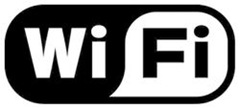I heard Downton Abbey was good.
Okay, I know it’s good. My wife and I are addicted. Heck, my parents got into it and tore through an entire series in a few days. And before I leave the topic of Downton, I find it strange that they call their seasons series. I’m not sure if this is a UK thing, but it really confuses the heck out of me. What happens when the show ends? You can’t call it the Series Finale… they’ve already had three of those. So what would it be called? Also, if they continue on with these Christmas Specials (which really aren’t Christmas Specials at all, but in fact extremely important episodes illustrating continuity), I think I just might lose it.
Anyways… why even bring it up. Oh yeah…
 We watch Downton Abbey in glorious 1080p HD quality. The show files themselves reside on a Mac Mini upstairs, running Plex Media Server. We mostly consume the shows downstairs via a Mac Mini running Plex Media Center, which is connected to a Sony LCD TV capable of 1080p. The troublesome connection in this setup is transferring data between the two Mac Minis. Neither are physically connected to each other, nor are they on wired networks. They are both dependent upon a wireless connection.
We watch Downton Abbey in glorious 1080p HD quality. The show files themselves reside on a Mac Mini upstairs, running Plex Media Server. We mostly consume the shows downstairs via a Mac Mini running Plex Media Center, which is connected to a Sony LCD TV capable of 1080p. The troublesome connection in this setup is transferring data between the two Mac Minis. Neither are physically connected to each other, nor are they on wired networks. They are both dependent upon a wireless connection.
At the center of our home network is a Netgear 802.11g/n router capable of simultaneous dual bands, with speeds of up to 900Mbps. Each Mac Mini is capable of communicating over both bands (2.4GHz and 5GHz) in B, G or N. In addition to these Minis, we have various other devices throughout the house that consume media wirelessly (laptops, iPod touches, etc.)
Recently the 5GHz radio in my dual band router decided to die. Luckily, the 2.4GHz band kept on running. The router was only four months old, so luckily it was covered under warranty (which unfortunately was not an easy process).
The problem with this dead radio was that the Mac Minis transmitted data over the 5GHz band. In my setup, the 5GHz band provided the fastest possible speeds, and allowed streaming of 1080p content. Now that the 5GHz band was gone, we began experiencing constant stuttering and buffering – since the 2.4GHz band was not providing the necessary bandwidth.
There are many reasons for this, some of which are listed here.
- Neighbor congestion
The area around my house has no less than 10 wifi signals operating on the 2.4GHz band. This band only has three unique channels (1, 6 and 11). I was operating on channel 6, but the neighboring channels 2, 3, 4, 5, 7, 8, 9 and 10 were causing interference – which results is lower transmission speeds and shorter broadcast distances. - Legacy devices not capable of 450Mbps
A 2.4GHz wireless network is only as fast as the slowest client connected. So, if you have a 802.11b device connected to your network, your speeds cannot exceed 11Mbps (the maximum throughput for 802.11b devices). - Improper placement of router
Something as simple as changing the placement of the router can affect its broadcast capability. Move it away from metal objects, or other electrical devices which may deflect inbound and outbound traffic. - Interference from other electrical devices
Similar to neighboring wifi networks, interference from household appliances can wreak havoc on your 2.4GHz wifi network. Microwaves transmit on this frequency to heat your food. Some cordless telephones use this frequency, and don’t forget about that baby monitor.
The 5GHz band is still susceptible to interference. Weather stations and some military branches use the 5GHz band, and for this reason wifi routers are limited to the amount of power they can transmit. The 5GHz band has more channels than 2.4GHz’s 11 bands, and none of them overlap. The lower bands are limited in their power output, while the higher bands can transmit at a higher wattage. So, in short, it’s best to use a higher channel to achieve maximum speeds and distance. As time progresses, and 5GHz devices become cheaper, they will be more broadly installed and more susceptible to neighboring interference. The newer 802.11ac standard, which promises 1Gbps throughput, should be fully embraced by 2015. This new standard uses the 5GHz band – only adding to the congestion.
Overall, using the 5GHz band doubles my transmission rate over 2.4GHz. If you don’t have a dual band router – yet use a myriad of devices all communicating on different standards – I suggest investing in a dual band router. Setup each band with it’s own SSID, and make sure 5GHz capable devices are using the 5GHz SSID, and slower legacy devices are using the 2.4GHz SSID.
This has been today’s Clarified Butter.
